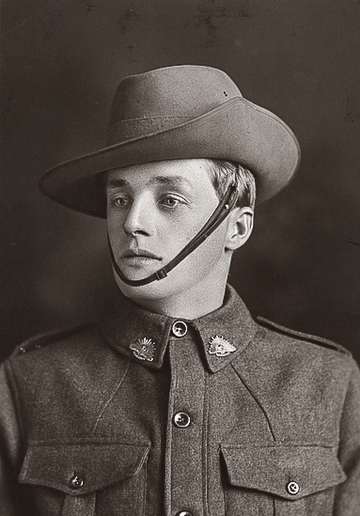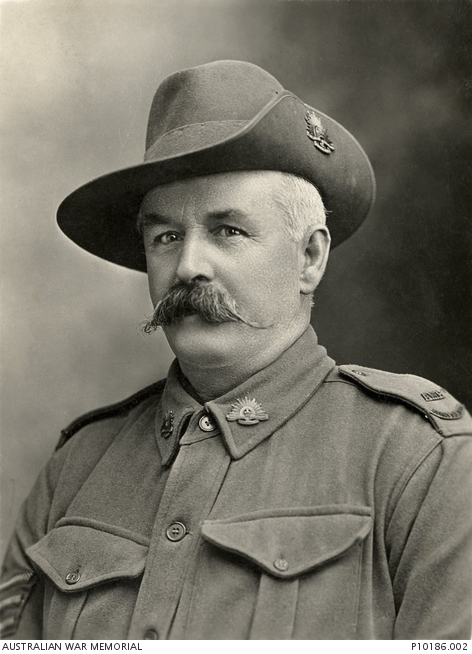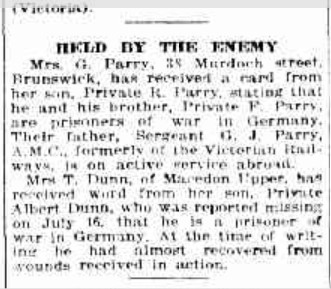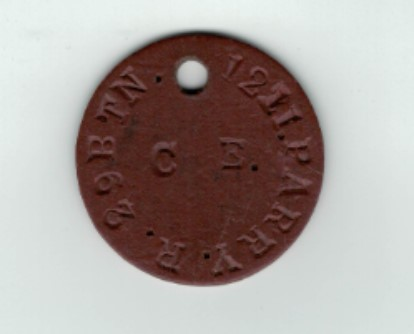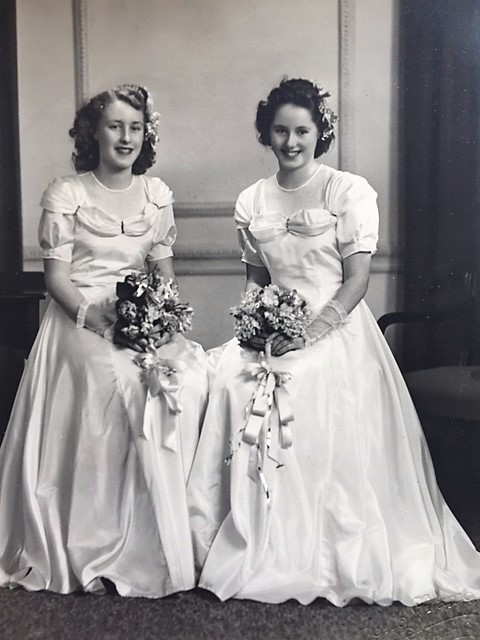Reuben Frederick PARRY
Eyes blue, Hair brown, Complexion fair
The Parry Brothers - “I am his brother and was with him”
The Parry Family
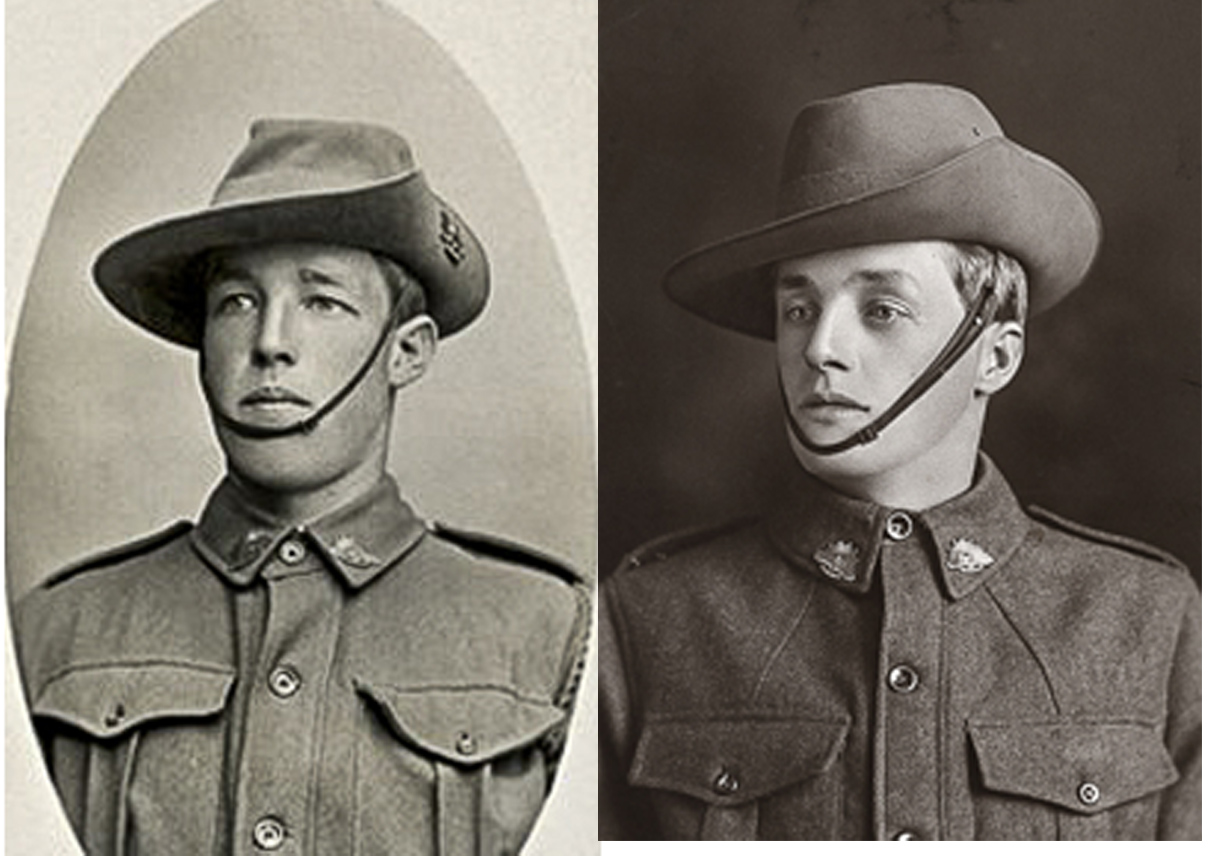
Reuben Parry was born in 1893 in Heathcote, Victoria and his younger brother Frederick Parry was born in 1895 at Warracknabeal, 2 of the 7 children of George and Sarah (nee Collins) Parry. Their father George worked on the railways, so the various children were born throughout country Victoria.
The family eventually settled in Brunswick, Melbourne. Frederick was known to his family and friends as “Fred”, attended school in the Brunswick area. He then worked as a plasterer’s improver with his older brother Reuben. Both brothers went missing at the Battle of Fromelles.
Unfortunately, Fred was to lose his life and Reuben was captured by the Germans and interred in Germany for the remainder of the war. Their father, at the age of 53, enlisted barely a month after two of his sons went missing in July 1916, likely in the hope of being able to find out more.
He was posted to the Army Medical Corps Sea Transport Staff. He was soon discharged on 10 January 1917, but immediately re-enlisted for home service duty at Mcleod Camp, Vic, where he served as a Sergeant until 1920.
Off to War
Fred was the first to try to enlist, but he was rejected due to "insufficient chest measurement". By June 1915, however, the minimum requirements had been eased and he now met the requirements. Reuben and Fred (successfully) enlisted on 12 July 1915 and were assigned to the newly formed 29th Battalion - Fred to A Company and Reuben to D Company.
Their training was held in the Broadmeadows Camp. Before departing for Egypt on 10 November 1915 on the A11 Ascanius, , the soldiers had been on parade in Melbourne in front of a good crowd. The Minister for Defence, H.F. Pearce reviewed the troops and said:
“I do not think I have ever seen a finer body of men.”
After a month’s voyage, they arrived in Suez, Egypt on 7 December. Training and defence of the Suez Canal continued until mid-June with postings at Ismailia, Tel el Kebir, Ferry Post and Moascar.
The troops were reviewed by the Prince of Wales while in Tel el Kebir. Also, as was the norm for most Australian troops, they took photos on camels in front of the Pyramids!
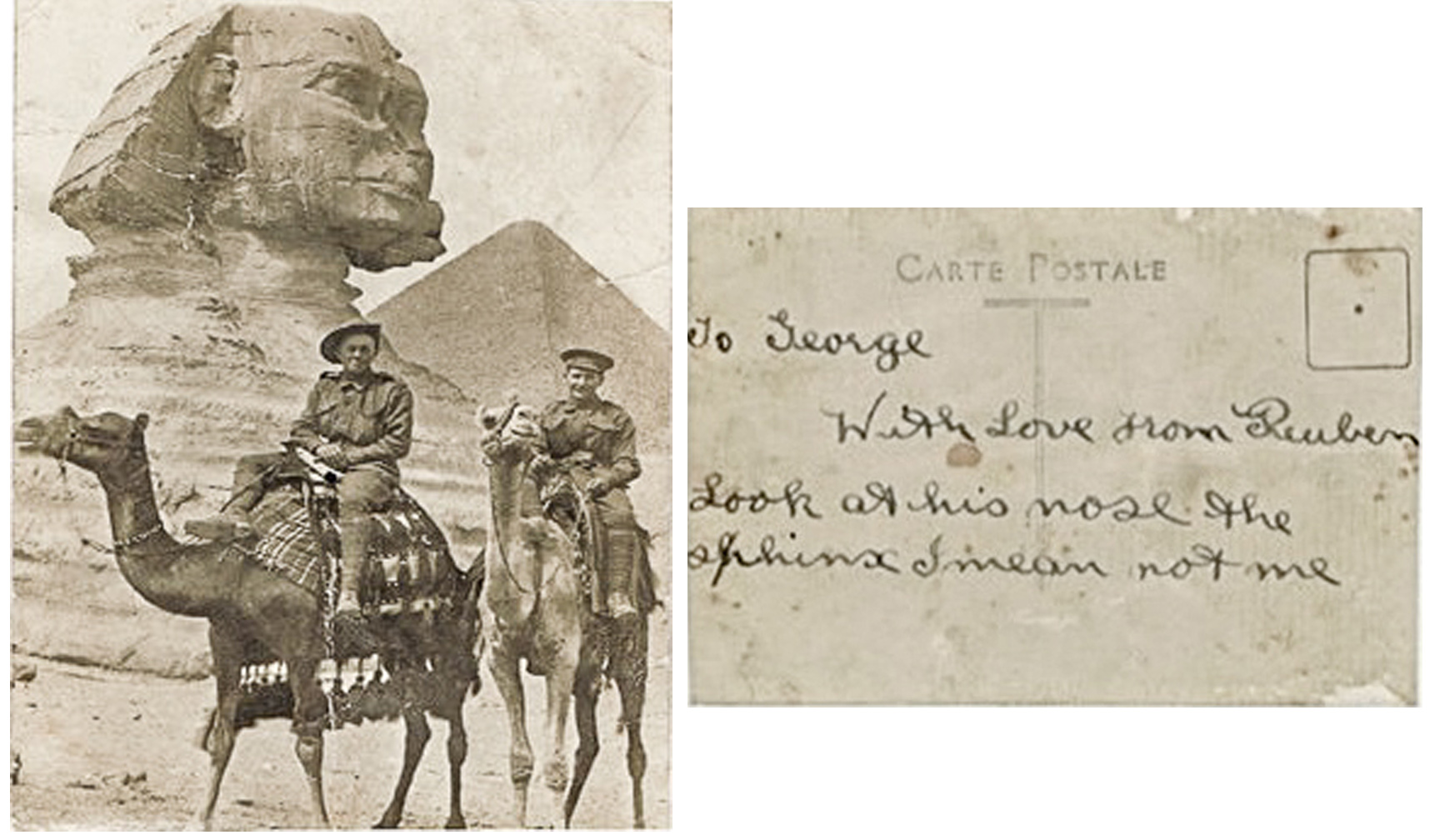
“To George, With love from Reuben look at his nose the sphinx I mean not me”
The Western Front
The call to the Western front came and on 16 June the 29th boarded the troop ship Tunisian in Alexandria, headed to Marseilles, arriving there on the 23rd. They then were on a train to Hazebrouck then to Steenbeque and by the 26th were encamped in Morbecque, about 30 km from Fleurbaix.
The Aussies were well received by the French. In a letter home, James Lang (858), 29th Battalion from Glengarry, Victoria, wrote:
“The French people lined the streets to see us, and gave us a great welcome. Lots of poor women and young girls started crying. No doubt the poor things were thinking of their own dear ones who had gone to the front.”
On 1 July the 29th moved back to Hazebrouck. Gas masks were now included in their training for the possible use of “lachrymatory shells” – tear gas. Training was tough and rugged. One day included a march of 16 miles carrying a 75 lb kit, which only the youngest and fittest could complete.
On 9 July they were moved to Erquingham, just outside of Fleurbaix and on the 10th they got their first experience in the trenches, with the “men all in good spirits”.
They were back at their billets in Fleurbaix four days later. A gas alarm was sounded on the 15th, but there was no effect on the troops in Fleurbaix.
The Battle of Fromelles
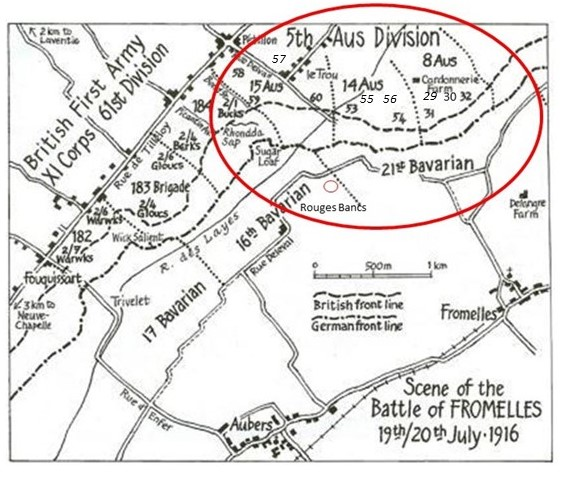
The 29th’s role was to be a ‘fourth’ battalion on the left flank of the attack. With the 30th, they were to provide support for the attacking 31st and 32nd Battalions by digging trenches, carrying supplies/ammunition and to be called in as reserves if needed for the fighting.
The original attack was planned for 17 July, but bad weather caused it to be postponed.
On 19 July the 29th were in the rear trenches, ready for the attack. The 32nd’s charge over the parapet began at 5.53 PM and the 31st’s at 5.58 PM.
There were machine guns emplacements to their left and directly ahead at Delrangre Farm and there was heavy artillery fire in No-Man’s-Land.
The initial assaults were successful and by 6.30 PM the Aussies were in control of the German’s 1st line system, which was described as:
“practically a ditch with from 1 to 2 feet of mud and slush at the bottom”.
By 8.00 PM, the brothers’ A & D Companies began to carry bombs and supplies to the front trenches. The Australians’ left flank had also come under heavy bombardment with high explosives and shrapnel.
Return bombardment support was provided and the 32nd was told “the trenches were to be held at all costs”.
Source AWM4 23/49/12, 32nd Battalion War Diaries, July 1916, page 12
At 10.00 PM, additional support was being requested and C and D Companies joined in. Unfortunately, they found that a number of the grenades they were carrying had no fuses.
The Germans counter attacked and at 2.00 AM and Fred’s and Reuben’s A and D Companies were drawn into the fighting. B and C Companies were also engaged, continuing to carry supplies and providing cover for soldiers who were retiring from the battle.
Fighting continued through the night. At 4.00 AM the Germans began an attack from the Australian’s left flank, bombing and advancing into the communications trench.
Given the Australian advances that had been made earlier, portions of the rearward trench had been left almost empty, which then enabled the Germans to be in a position to surround the advanced soldiers.
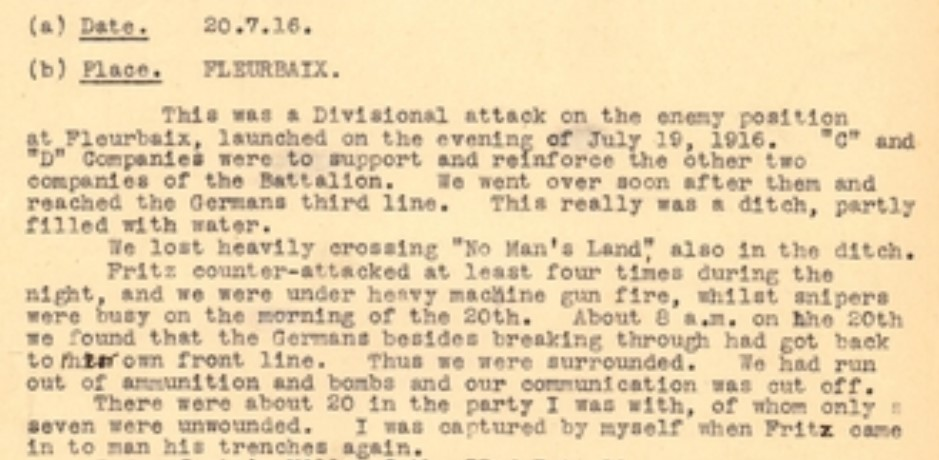
As the Australian attack had been halted, they became exposed in a salient jutting into the German lines and were quickly enfiladed by German machine guns. “In the end, they basically had to fight their way back to their own lines, 'run for it', or be killed wounded or captured.”
Source 29th Battalion VWMA Httpsps://vwma.org.au/explore/units/111
In the morning the battle was over. The 29th were left to hold the front line and, even though a cease fire was not in effect, they were busily bringing back a large number of wounded during the day and night. The nature of this battle was summed up by Private Jim Cleworth (784) from the 29th:
"The novelty of being a soldier wore off in about five seconds, it was like a bloody butcher's shop".
For a battalion supposed to be in a support role, the initial figures of the impact of the battle on the 29th was 17 soldiers died, 161 were wounded and 68 were missing. Ultimately, 66 soldiers of the 29th Battalion were killed in action or died of wounds from the battle, 37 of which were unidentified.
Side by Side in the Thick of the Battle
Reuben's Red Cross report (in 1918, after the Armistice) stated that the two brothers had been together close to the German lines during the attacks that night.
With German troops counter-attacking all along their front and machine-gun fire sweeping down No Man’s Land behind them, the Parry brothers were indeed in a precarious situation. Fred was shot in the arm and was bleeding badly.
They decided that the severely wounded Fred should try to return to the Allied lines and that Reuben would stay with his unit and try to carry on.
Reuben stated that “I sent him back to the German lines when I made a rush to get back to our lines.” It was the last time Fred was seen alive.
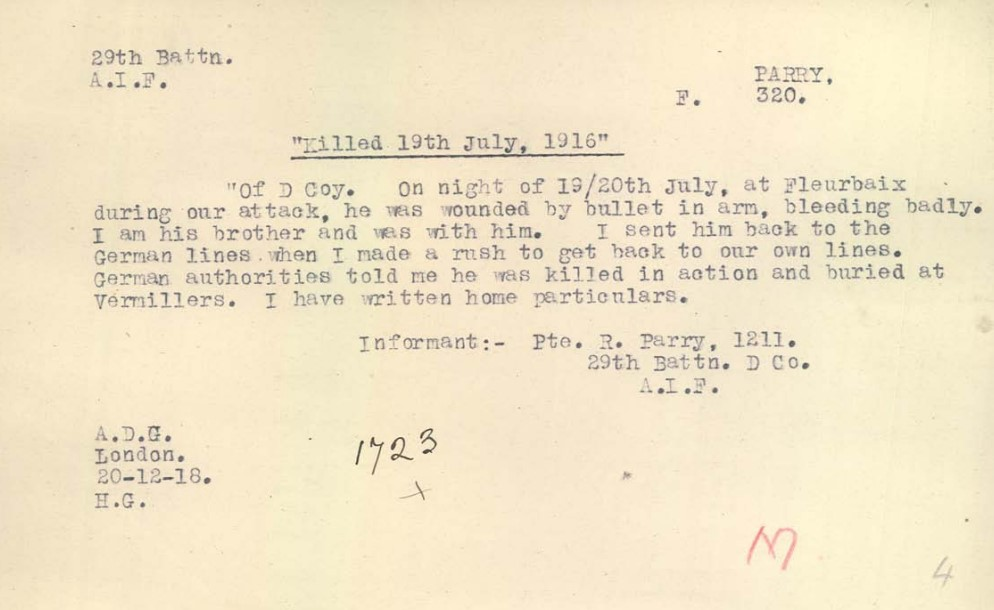
After they separated, Reuben was wounded after accidentally crawling under a German machine gun and he was captured and taken prisoner.
News was limited
The family were advised shortly after the battle that Fred was “missing in action”, but little else was provided. With all of the confusion and uncertainty from the battle, the initial reports back home had both Fred and Reuben as Prisoners of War.
The truth was that Fred was Killed in Action and his body had been recovered by the Germans. His name appeared on a German Death List of 4 November 1916.
It is not known when this information was provided to the AIF, but in late March 1917 there was a note that his identity disc had been received from the German authorities and that he had been buried in the vicinity of Fleurbaix.
Fred was formally declared by the AIF as Killed in Action on 18 April 1917. Apparently, a cable had been sent to Base Records in Melbourne on 28 April 1917 that Fred had been killed in action, which was presumably sent on to the family, but in a cable in June 1918, Fred’s father stated he had NOT received any news about Fred besides “missing in action”.
Two years of not knowing…
Fred was awarded the 1914-15 Star, the British War Medal and the Victory Medal. He was commemorated at VC Corner, Panel 1, Fromelles, France.
Finding Fred
There were extensive efforts after the War to find missing soldiers. Evidence was given to the Red Cross in 1919 that Fred was one of nine soldiers killed on the evening of 19-20 July and buried on 22 July as part of a larger group of twenty or thirty in a grave in a sap near “Water Farm, Pozieres” (this reference to Pozieres was a common mistake of the times relating to French placenames).
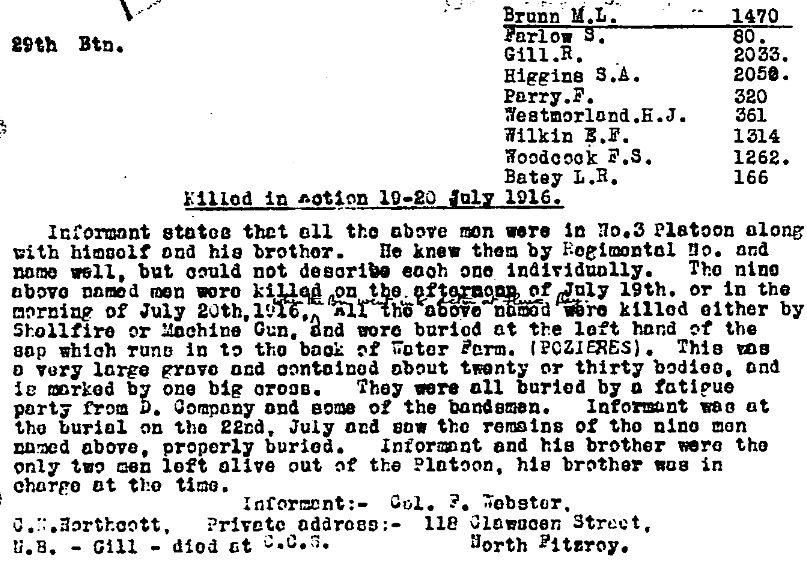
The sap (a short covered trench / tunnel) is probably on the Mine Ave end of the trench (marked in blue in the map below) near where the “water farm” is marked.
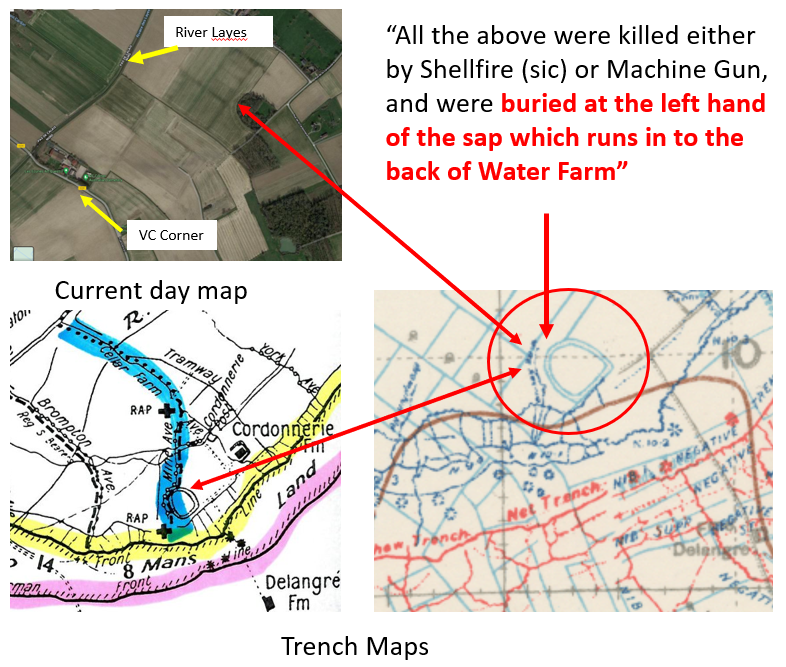
There are also similar notes in these soldiers’ AIF files that they are buried at Fleurbaix, and a general map reference, sheet 36, with the exception being Private Robert Gill who died at the casualty clearing station and is buried at the Bailleul Communal Cemetery Extension.
It would have been chaos in the trenches during the battle and in the immediate aftermath, and it is no wonder records of deaths and burials are often non-existent or contradictory.
There are no records of these soldiers being found in this vicinity. However, in 2008 a burial ground was located at Pheasant Wood behind the old German front line at Fromelles that contained the bodies of 250 British and Australian soldiers.
Many of their identities, including Fred, were confirmed through a combination of anthropological, archaeological, historical and DNA techniques.
To date (2024), DNA testing has been able to identify 180 of these 250 soldiers.
Aged 20 at the time of his death, Fred Parry was re-interred at the new Fromelles (Pheasant Wood) Military Cemetery on July 19th, 2010 with a headstone as a permanent memorial to his sacrifice and where he rests today.
An epitaph written by his descendants appears on his headstone:
Dearly loved son of George and Sarah Parry of Brunswick, Victoria. Gone but not forgotten
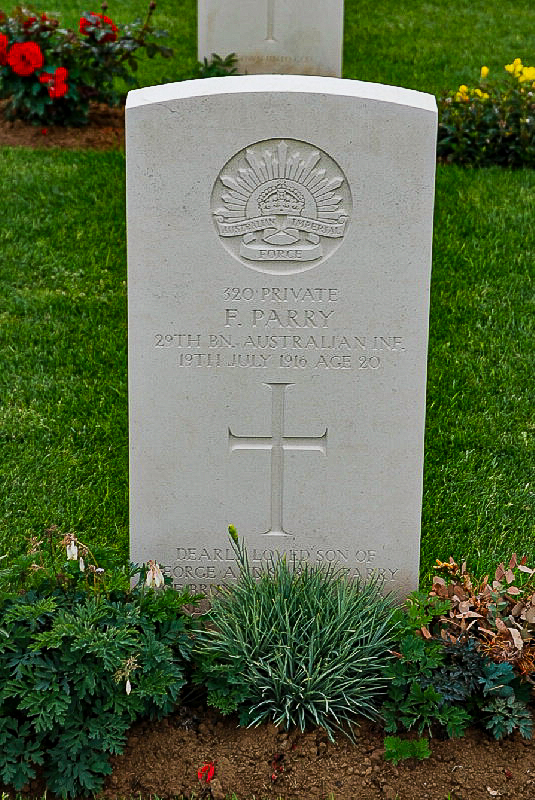
Reuben – Prisoner of War after the battle
Reuben was one of 470 Australian POWs from the battle. As reported by Private Sidney McGarvey, 30th Battalion, the initial treatment of the POWs was challenging:
Those who could walk were immediately marched back to a village and placed in a barn.
We were kept there till 9 o'clock that morning. Then we were marched to Lille, a distance of some five kilometres.
While we were quartered in the barn it was guarded by a detachment of Uhlans….Then we marched on to Lille.
There were some very badly wounded men amongst us but we were given no rest at all.
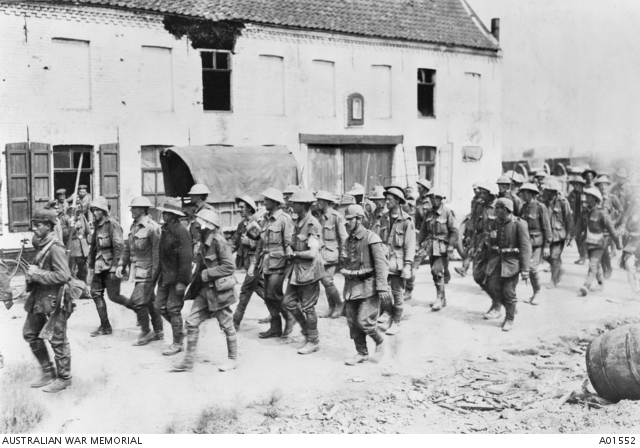
Reuben was listed as being in the Dulmen Prison, north of Essen, Germany, about 400 km from Fromelles in August 1916. At Dulmen, he met prisoners Pte Amey, Pte Carter and Pte Harold John Wilkin, brother of Ernest, who was also killed in action and reportedly buried alongside Frederick. Both Harold and Reuben lost brothers at Fromelles and were taken prisoner of war during the battle.
Reuben was then transferred to Munster II at "Rennbahn" (racetrack) in September 1916, not far from Dulmen. It was built in 1914 and first occupied by French POWs in 1915. This was located on what is now Hammerstrasse, between the city and village of Hiltrup.
In October 1916, Reuben is listed in hospital in Germany, but was eventually sent to work “on commando” in Prussia, where prisoners worked in mines or local factories.
Reuben was eventually freed, repatriating to Dover on 2 December 1918. He returned to Australia on 5 Mar 1919.
After returning home, he worked as a boxmaker and later as a timber worker, residing in Brunswick West, Victoria. Reuben would go on to marry Doris Townsend in 1930 and in 1932 they welcomed twins Thelma and Joyce.
Reuben and Fred’s Parents Sarah and George passed away in 1938 and 1941. Reuben passed away in 1968 and is buried at Fawkner Cemetery.
Frederick and Reuben are remembered with honour.
Still More Soldiers to be Found?
Despite being identified as being buried in the sap, four of these nine men - Ernest Wilkin, Frederick Parry, Samuel Farlow and Norman Brumm – were identified in 2010 as being buried in the Pheasant Wood Cemetery! Was the original grave disturbed by shelling or otherwise re-opened necessitating re-burial by the Germans?
With four already identified, are the remaining four (Herbert Westmoreland, Francis Woodcock, Lemuel Batey and James Higgins) still amongst those soldiers now buried at the Pheasant Wood cemetery but unidentified?
We hope to be able to identify more of the nine by persisting in the search for suitable DNA donors.
The Fromelles Association would love to hear from you

Contacts
(Contact: carla@fromelles.info or geoffrey@fromelles.info).
(Contact: army.uwc@defence.gov.au or phone 1800 019 090).
Donations
If you are able, please contribute to the upkeep of this resource.
(Contact: bill@fromelles.info ).
